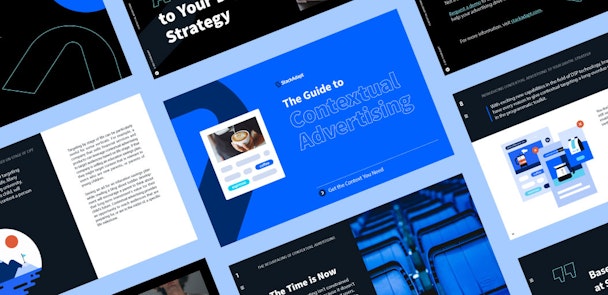The guide to contextual advertising: get the context you need
Contextual advertising has resurfaced, and it’s better than ever. Modern contextual advertising leverages machine learning and artificial intelligence (AI), which has made this targeting method more effective than ever before. Thanks to current technology, contextual advertising is multichannel and scalable, making it a reliable means for reaching your audience.

StackAdapt's new report, The Guide to Contextual Advertising: Get the Context You Need, is available to download now
Contextual targeting is especially relevant now because it isn’t constrained by privacy legislation. It doesn’t collect or use information about users, which means user privacy is protected. Instead, it leverages the context next to which the ad appears. Rather than targeting ads based on user behavior, sophisticated algorithms target contextual ad placements based on keywords, website content, and other metadata. This way, ads are shown to users based on the content they are consuming at that moment in time.
The key difference between contextual and behavioral advertising is that behavioral targeting aims to ensure the ad is relevant to the user, leveraging cookies to target based on a user’s past actions. Contextual advertising targets based on the content of the page on which the advertisement appears, targeting a user based on content they are actively consuming.
Contextual advertising delivers unique benefits which make it a particularly effective strategy for campaign planning. For example, it gives marketers an opportunity to target niche contexts. Marketers can choose to target by a general topic, or use a collection of keywords for more precise targeting. And, since contextual advertising campaigns are served programmatically, metrics can be reviewed in real-time and optimized for maximum performance.
With a contextual campaign, products and services in sensitive categories can drive awareness using in-context and out-of-context phrases. AI search engine technology enables a marketer to identify the phrases and keywords that are most appropriate to target. By doing this, a marketer can eliminate phrases within the campaign targeting methodology, ensuring the ads reach the right audience. Another strategy is to widen the contexts targeted to reach new, broader audiences. This enables marketers to experiment with targeting a wider audience, to find what really works.
Contextual advertising offers an alternative to targeting with cookies, and aligns with upcoming trends and policy changes. It provides advertisers another option for diversifying methodologies and experimenting with new marketing strategies.
To learn more about how contextual targeting works, its' benefits, and how to introduce it into a multichannel digital strategy download your copy of The Guide to Contextual Advertising: Get the Context You Need by filling in the form below:
Content created with:

StackAdapt
StackAdapt is a multi-channel programmatic advertising platform used by the most exceptional digital marketers. This state-of-the-art platform is where some of the...
Find out more